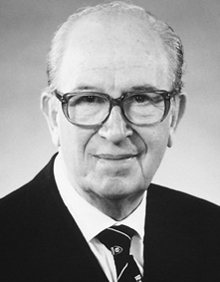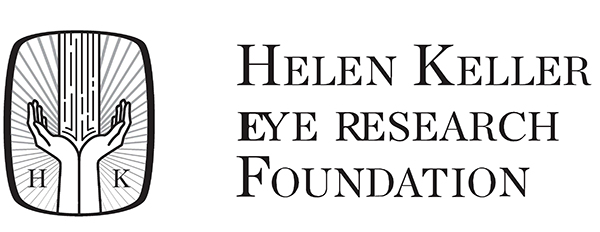 Norman Ashton, CBE, FRS, D.Sc. was born in London in 1913. He qualified in medicine at King’s College, London and Westminster Hospital Medical School, where, in the Hospital, he served as House Physician, House Surgeon and Senior Medical Officer.
Norman Ashton, CBE, FRS, D.Sc. was born in London in 1913. He qualified in medicine at King’s College, London and Westminster Hospital Medical School, where, in the Hospital, he served as House Physician, House Surgeon and Senior Medical Officer.
He then specialized in Pathology, being appointed Pathologist to the Kent and Canterbury Hospital, followed by military service in the Royal Army Medical Corps in West Africa and Egypt where, as Lt. Colonel he provided a full pathological service to the Army in the Middle East.
In 1948 he was invited to be director of Pathology at Moorfields Eye Hospital and the newly created Institute of Ophthalmology, University of London, a post he held for 30 years. During this period he built a laboratory of outstanding international repute, which besides providing a clinical service for Moorfields and hospitals throughout Great Britain and the world, contributed extensively to research into the causes and prevention of blindness.
His personal achievements as a research worker are legendary, resulting in over 250 scientific publications. His early anatomical studies were of the choroidal circulation, Schlemm’s Canal and the trabecular meshwork of which he produced singularly beautiful casts wherein the exact anatomy of aqueous veins was first demonstrated. These were followed by fundamental contributions to the understanding of retinal vascular disease, including the pathogenesis of cotton wool spots, microaneurysms and neovascularization. From his laboratory came the first description in clinical ophthalmology of the pivotal role of the blood-retinal barriers in ocular health and disease; the first structural and ultrastructural investigation of experimental hypertensive retinopathy and many studies on the pathogenesis of diabetic and other retinopathies. He was the first worker to study the behavior of retinal vessels in tissue culture and to demonstrate, with his associates, the key role of the endothelium in the blood-retinal barrier system.
Perhaps his best known work was the discovery of the pathogenesis of prematurity (with Basil Ward), in which he demonstrated the role of excessive oxygen in causing a specific and irreversible obliteration of growing retinal vessels. His wide experience in general pathology resulted in original studies in ocular toxocariasis, nosematosis, amoebic infections of the eye and several investigations into eye diseases in animals and fish.
Professor Ashton was largely instrumental in founding the European Ophthalmic Pathology Society, of which he is Life President; he was President of the Ophthalmological Society of the United Kingdom at its Centenary, of the Ophthalmological Section of the Royal Society of Medicine, of the Association of Clinical Pathologists and the British Division of the International Society of Pathologists, and was closely involved in founding the Royal College of Pathologists. In 1984 he became Master of the Worshipful Society of Apothecaries of London. Professor Ashton was a founder of the British charity Fight for Sight which has raised millions of pounds for research, mainly directed to the London Institute of Ophthalmology, and, on his retirement from the Chairmanship, the splendid new extension was named the Ashton Building.
The success of his scientific work has won him international reputation and many academic honors; indeed there is scarcely a distinction at home or abroad that has eluded him. Among these was his appointment in 1976, by Her Majesty the Queen, as Commander of the Order of the British Empire, and he is one of the select few, in ophthalmology or pathology, to have been elected, in 1971, a Fellow of the Royal Society. The University of Chicago honored him with a Doctorate of Science, (1973), and he was elected a Fellow of the College of Physicians of Philadelphia (USA) in 1976. His numerous other awards include: the Proctor Gold Medal (USA) 1957; the Bowman Lecture Medal, 1965; the Gonin Medal presented at the International Congress of Ophthalmology in Japan, 1978; the Jules Stein Award, 1981 (with A. Patz); the International Pisart Vision Award (The Lighthouse Inc. NY), 1991; the Buchanan Medal of the Royal Society, 1996; and now, in 1998, the prestigious Helen Keller Prize for Vision Research.
In all these awards Professor Ashton has always acknowledged the great contributions of his many colleagues and associates who through the years contributed so richly to the research of his Department. With the publication of the British Journal of Ophthalmology Festschrift in June, 1978, some of his fellow workers were able to pay their tribute to a man who not only epitomizes the best in ophthalmic pathology but whose warmth and integrity have won him a permanent place in their affection and esteem.

